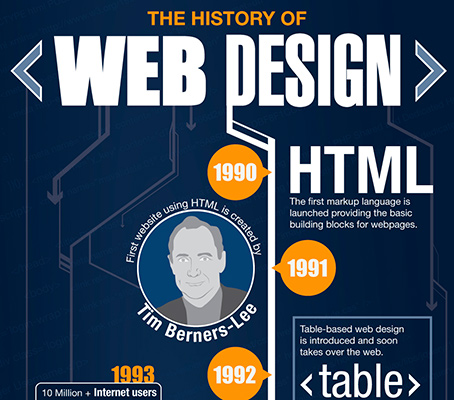The Development Of Website Layout: From Past To Present
The Development Of Website Layout: From Past To Present
Blog Article
Article Writer-Johnsen Peters
In the past, sites were straightforward and concentrated on details. Navigating was straight, and style was for desktops. Now, customer experience is crucial. Information overviews designs for easy navigation. Responsive layouts match different devices. Today, dark mode reduces stress, and minimal menus improve navigating. Interactive attributes involve customers, and strong visuals attract attention. AI integration enhances involvement. See just how design has actually progressed to improve your on-line journey.
Early Days of Web Design
In the very early days of web design, simpleness preponderated. Internet sites were fundamental, with minimal colors, typefaces, and layouts. The focus got on supplying details instead of showy visuals. Customers accessed the net through sluggish dial-up links, so speed and performance were crucial.
Navigating menus were straightforward, generally located on top or side of the page. Sites were developed for desktop, as mobile browsing wasn't yet prevalent. Web content was king, and developers focused on very easy readability over complicated layout components.
HTML was the main coding language made use of, and developers had to function within its constraints. Computer animations and interactive attributes were minimal contrasted to today's requirements. Sites were fixed, with little vibrant material or personalized user experiences.
Surge of User-Focused Style
With the evolution of site style, a shift towards user-focused layout concepts has ended up being increasingly famous. Today, producing web sites that prioritize user experience is critical for involving visitors and accomplishing company goals. User-focused style involves understanding the demands, preferences, and habits of your target market to customize the site's format, content, and includes accordingly.
Developers currently perform detailed research study, such as customer surveys and usability screening, to gather insights and responses straight from individuals. This data-driven approach aids in creating instinctive navigating, clear calls-to-action, and visually enticing user interfaces that resonate with visitors. By positioning the user at the center of the layout procedure, internet sites can supply an extra customized and delightful experience.
Responsive design has also become a crucial aspect of user-focused layout, making sure that websites are maximized for numerous tools and screen dimensions. This versatility boosts ease of access and functionality, catering to the varied ways individuals engage with web sites today. In essence, the surge of user-focused layout represents a shift in the direction of producing electronic experiences that focus on the needs and expectations of the end individual.
Modern Trends in Web Design
Check out the latest trends shaping web design today. One noticeable trend is dark setting style, supplying a streamlined and modern-day appearance while minimizing eye strain in low-light settings. Another vital pattern is minimalist navigation, simplifying food selections and improving individual experience by concentrating on essential elements. Incorporating micro-interactions, such as computer animated switches or scrolling results, can develop an extra engaging and interactive website. Responsive layout remains vital, ensuring seamless user experiences throughout various tools. Furthermore, using vibrant typography and asymmetrical designs can include aesthetic rate of interest and accentuate particular content.
Incorporating https://www.marketingprofs.com/articles/2022/46783/how-to-maximize-your-digital-b2b-marketing-strategy-with-pim , like chatbots for client assistance or customized referrals, enhances user engagement and streamlines procedures. Ease of access has also become a substantial fad, with designers focusing on comprehensive design techniques to satisfy varied customer requirements. Accepting sustainability by enhancing internet site performance for speed and performance is one more emerging trend in website design. Teaming up with individual feedback and information analytics to repeat and enhance layout continually is necessary for staying pertinent in the ever-evolving digital landscape. By welcoming these contemporary trends, you can produce a visually enticing, straightforward internet site that reverberates with your target market.
https://bankingjournal.aba.com/2022/07/the-value-of-competitor-social-media-analysis-the-value-of-competitor-social-media-analysis/
As you assess the evolution of website design from the very early days to now, you can see exactly how user-focused design has actually become the driving pressure behind modern patterns.
Embrace the trip of modification and adjustment in website design, constantly keeping the individual experience at the center.
Tippingpointdigital
Remain present with the latest patterns and modern technologies, and never ever quit developing your technique to produce aesthetically magnificent and straightforward web sites.
Develop, adjust, and create - the future of web design remains in your hands.
